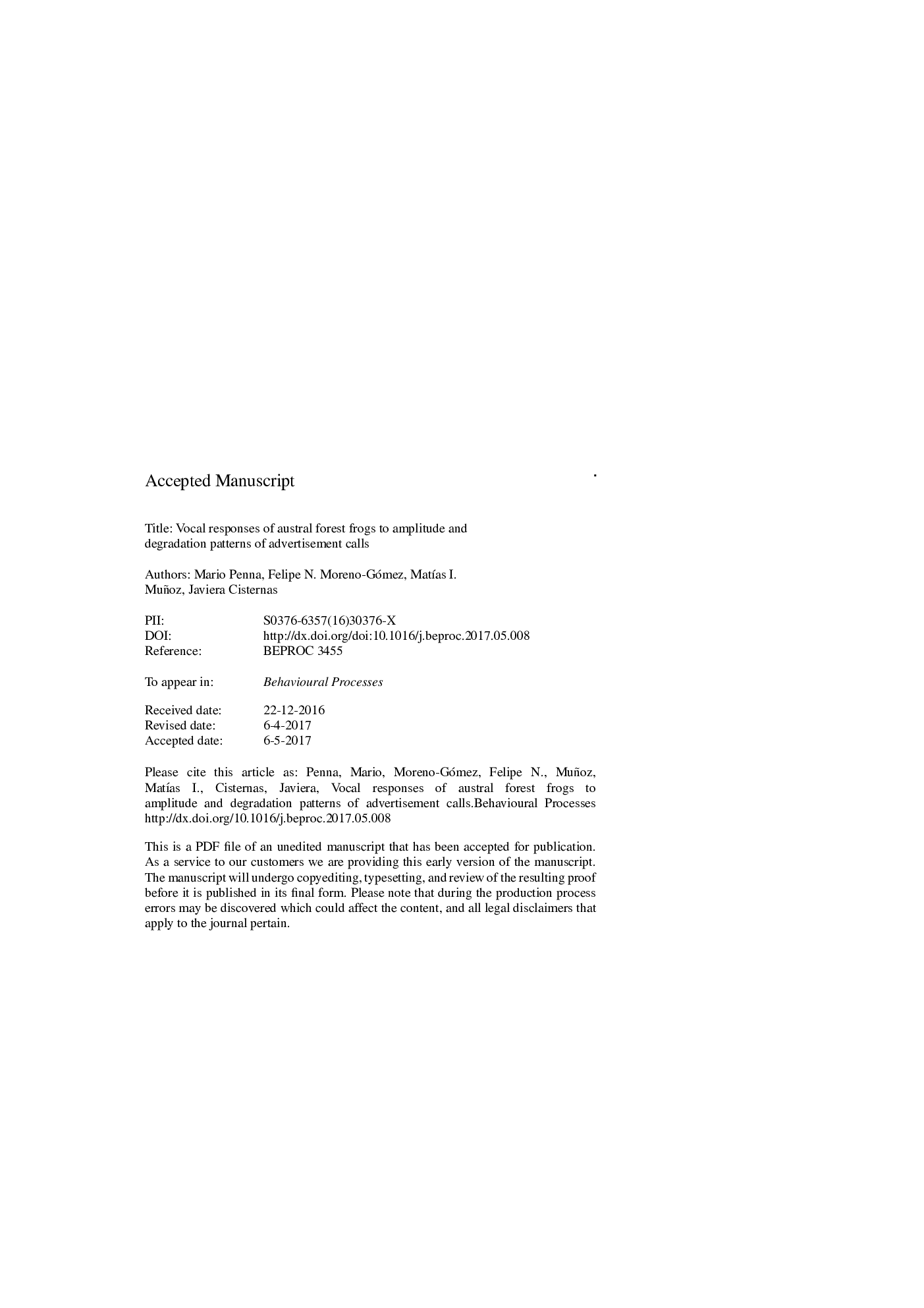| Article ID | Journal | Published Year | Pages | File Type |
|---|---|---|---|---|
| 5539790 | Behavioural Processes | 2017 | 51 Pages |
Abstract
Degradation phenomena affecting animal acoustic signals may provide cues to assess the distance of emitters. Recognition of degraded signals has been extensively demonstrated in birds, and recently studies have also reported detection of degraded patterns in anurans that call at or above ground level. In the current study we explore the vocal responses of the syntopic burrowing male frogs Eupsophus emiliopugini and E. calcaratus from the South American temperate forest to synthetic conspecific calls differing in amplitude and emulating degraded and non-degraded signal patterns. The results show a strong dependence of vocal responses on signal amplitude, and a general lack of differential responses to signals with different pulse amplitude modulation depths in E. emiliopugini and no effect of relative amplitude of harmonics in E. calcaratus. Such limited discrimination of signal degradation patterns from non-degraded signals is likely related to the burrowing habits of these species. Shelters amplify outgoing and incoming conspecific vocalizations, but do not counteract signal degradation to an extent comparable to calling strategies used by other frogs. The limited detection abilities and resultant response permissiveness to degraded calls in these syntopic burrowing species would be advantageous for animals communicating in circumstances in which signal alteration prevails.
Related Topics
Life Sciences
Agricultural and Biological Sciences
Animal Science and Zoology
Authors
Mario Penna, Felipe N. Moreno-Gómez, MatÃas I. Muñoz, Javiera Cisternas,
